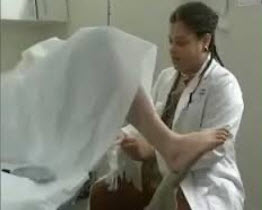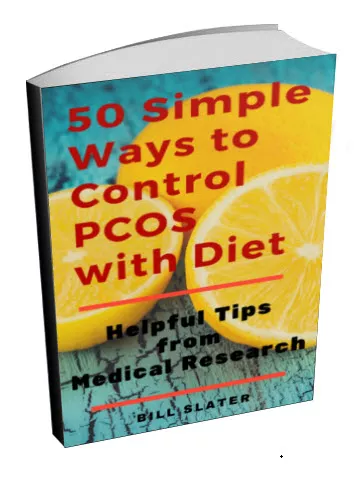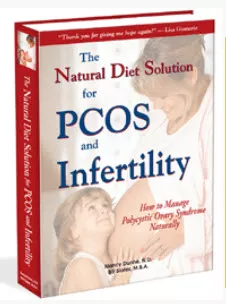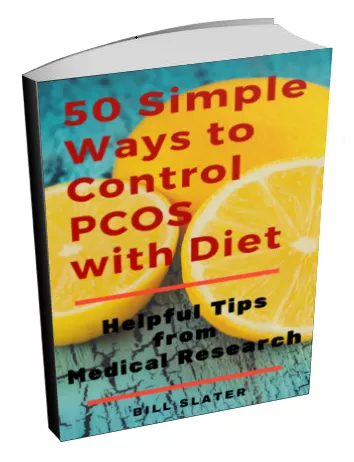How Ovarian Cysts Are Diagnosed and Treated
Your doctor's task is to do enough investigation of possible ovarian cysts in order to establish a differential diagnosis. In other words, he or she has to determine whether or not your symptoms are caused by an ovarian cyst, or something else.
Free PCOS Newsletter
In order to do this, some technical procedures may be required. After diagnosis, there is a limited array of treatment options.
Diagnosis of an Ovarian Cyst
Pelvic Exam

An ovarian cyst may be discovered by your doctor during a pelvic exam, while she is palpating your
ovaries. If a cyst is suspected, an ultrasound is usually the next step.
If you have a family history of ovarian cancer or if you're menopausal, it's more likely that your doctor will order a pelvic ultrasound or laparoscopy. Your doctor may also order a CA-125 blood test for cancer, although that test is NOT specific for ovarian cancer.
Pelvic Ultrasound
Ultrasound is a painless procedure where sound waves are transmitted through your pelvic area and an image of your ovaries and uterus is shown on a video screen.
The image is analyzed to determine the nature of the cyst (fluid-filled, solid or mixed), as well as its size, shape and location.
Pelvic Ultrasound
Ultrasound is a painless procedure where sound waves are transmitted through your pelvic area and an image of your ovaries and uterus is shown on a video screen.
The image is analyzed to determine the nature of the cyst (fluid-filled, solid or mixed), as well as its size, shape and location.
Laparoscopy
Laparoscopy is a surgical procedure performed when your doctor wants to see the cyst. A thin, lighted telescope, called a laparoscope, is inserted through a small incision into your abdomen.
Laparoscopy may be used for treatment as well as diagnosis.
How Ovarian Cysts are Usually Treated
"Watchful Waiting"
If you have no symptoms and ultrasound shows a small, fluid-filled cyst, your doctor may simply schedule another pelvic exam and ultrasound in six weeks or so.
The concept behind watchful waiting is to not actively treat the cyst unless it does not go away as your hormones change. An unchanging or growing cystic ovary needs further investigation. If a cyst persists longer than a few months, and if it is worthy of attention, hormone therapy or surgery may be the next steps.
Birth Control Pills
If you have a functional cyst that is larger in size and causing some symptoms, birth control pills may be prescribed.
The purpose of birth control pills is to stop you from ovulating. If you can't ovulate, it is thought your cysts are less likely to grow. Birth control pills may reduce the probability of other cysts growing.
Surgery
Your cyst may be surgically removed if it is 5 centimeters in diameter or larger.
Or, surgery may be required if the cyst is solid or filled with debris, persistently growing, irregularly shaped, or causing pain or other symptoms.
If the cyst is not cancerous, it can be surgically removed without also removing the ovary. This is called a cystectomy.
In some cases, your doctor may want to remove the affected ovary, while leaving the other ovary intact in order to maintain your ability to have a normal hormone cycle.
Pain Relief
Sometimes, a pain killer medication may be prescribed, or an over-the-counter pain control pill may be recommended. This only provides temporary symptomatic relief and should not be relied upon for long-term care.
Alternative Treatments
Surgery or birth control pills are the usual treatment. However, you do have other treatment options to consider.
The best alternative way to deal with cysts is to prevent them in the first place. You can do this with improved lifestyle habits and a healthier diet, according to the medical research.
Related Articles
- Ovarian Cyst Main Page
- What Symptoms Should You Look Out for?
- Discover the 5 Types of Cysts
- Prevention and Alternative Treatment
Get Answers to your Questions about
- Fertility
- Weight Control
- Hair Loss
- Stress
- Unwanted Hair
- Acne...and more!
FREE PCOS Report
and Newsletter

Your email is safe with us. We respect your privacy, and you may unsubscribe at any time.
Recent Articles
-
PCOS Long Journey to The Happy End
Apr 30, 18 07:24 PM
Hi Girls, Maybe my story will have one day a good end but I am not there yet. Until I was 31 years old I lived my dream, having lovely husband, good -
PCOS and Miscarriage
Apr 17, 18 04:03 PM
Proper diet and natural supplements can help the body maintain a pregnancy through successful delivery.
-
How to Deal with PCOS and Stress
Apr 04, 18 04:19 PM
Your body has a natural capacity to heal itself if you provide it with the necessary tools.





